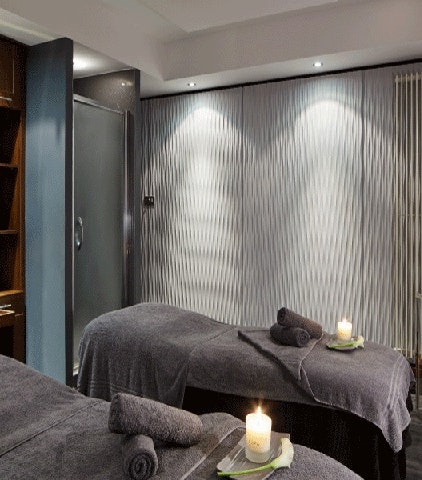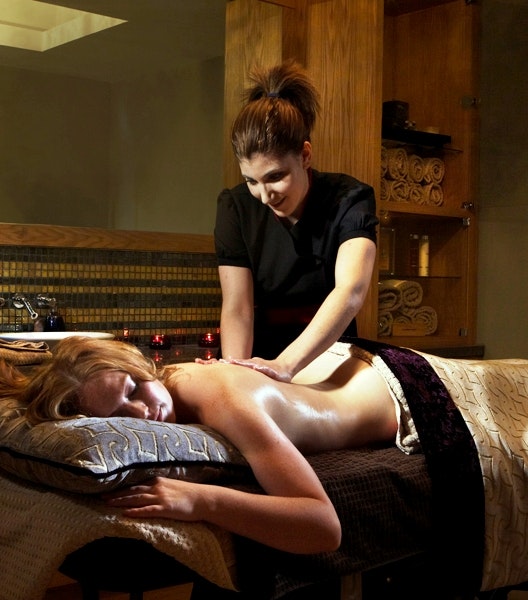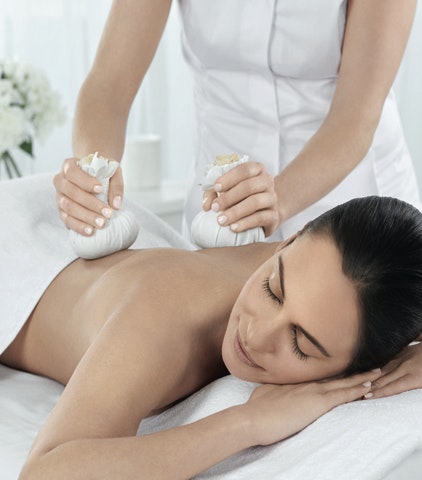
Peel Facials
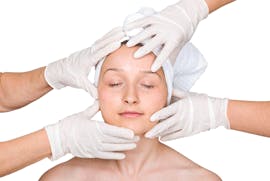 Many of you will have tried a peel-off face mask at home. These products are usually applied to damp skin, creating a film which is peeled off after 10 minutes or so once dry, freeing pores of trapped dirt. The experience of a peel facial at a spa however is often far different.
Many of you will have tried a peel-off face mask at home. These products are usually applied to damp skin, creating a film which is peeled off after 10 minutes or so once dry, freeing pores of trapped dirt. The experience of a peel facial at a spa however is often far different.
The majority of peels offered within medical spa environments are designed to remove entire layers of dead skin cells and target the skin’s appearance at a much deeper level, to reveal a brighter and more youthful complexion. Many of these treatments utilise an acidic chemical (see the ‘chemical peel facials’ section below), while others feature light impulse therapy (see ‘laser peel facials’). An increasing number of traditional spas are offering non-chemical and non-laser peel facials too, promising similar results with minimal risk of irritation (see ‘non-chemical and non-laser peel facials’).
Since ‘peel facial’ is a term used to describe a wide variety of facials across the spa and cosmetology industries, we understand that choosing a peel facial can be difficult. So, this guide explains what spa-goers can typically expect from each of the available peel types.
However, you should always check with our experts or the website for your chosen venue to determine the exact procedures - and aftercare - involved in your selected facial.
For more on traditional spa facials, see our dedicated guide.
Chemical peel facials
Chemical peels are one of the best-known non-surgical cosmetic procedures available. These facials can be used to transform blotchy and/or sun-damaged skin, and to reduce blemishes like fine lines, scars and age spots, while providing an overall more radiant and younger-looking appearance.
After your skin has been cleansed and analysed by your therapist, a chemical solution - often containing an alpha hydroxy acid (AHA), such as glycolic acid - is expertly applied to the skin and left to do its work for up to 10 minutes. This solution will quickly remove the surface layer of your skin (the ‘epidermis’) to encourage increased collagen production in the deepest layer (the ‘dermis’) and rapid skin regeneration for a dewy, glowing complexion. While some discomfort in the form of minor ‘tingling’ can be expected, this process is far less painful than it may sound, which is why chemical peels seldom include the use of anaesthetics.
The therapist will check your skin at regular intervals throughout the treatment to ensure it is not reacting adversely to the applied chemical.
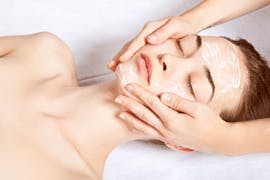 Do chemical peels hurt?
Do chemical peels hurt?
A whole host of next generation, medical-grade chemical peel solutions designed to ensure minimal discomfort and recovery time for treated skin have flooded the beauty industry. While the harshest peels could leave your face sore and scaly for up to two weeks afterwards, newer chemical peels will simply leave your skin mildly pink for a day or two, as though you’ve caught the sun. Nowadays, most people who undergo a chemical peel can return to work as quickly as an hour after their treatment if they wish.
During the treatment itself, you will likely feel a very mild burning sensation once the involved acidic solution is applied to your face. Be sure to inform the dermatologist/aesthetician immediately should you feel any significant discomfort or pain.
Chemical peel aftercare
Chemical peel facials can differ greatly between spa venues, and each treatment has its own unique aftercare requirements - always follow the advice given to you by your therapist.
Laser peel facials
Depending on the type of laser used by your selected medical spa, laser peel facials - also known as ‘laser resurfacing’ - can be used to diminish shallow acne scars, even-out pigmentation, tighten and smooth skin, and remove fine lines.
There are two main types of laser facial - ablative and non-ablative. The former sees the epidermis destroyed by intense light radiation, to expose and stimulate the dermis - heating the dermis encourages a boost in collagen production, meaning replacement skin will be ‘plumper’, and you’ll appear more youthful. Non-ablative laser facials, meanwhile, target the dermis but without damaging the epidermis.
Whether you choose an ablative or non-ablative procedure, your face will be cleansed and anesthetised before your therapist points the laser beam over the areas to be treated (these will be decided during your preceding consultation). The therapist will control how deep the laser penetrates in order to tackle your specific skin problems and/or imperfections.
Do laser facials hurt?
The amount of discomfort felt during your laser facial is largely dependent on whether it is ablative or non-ablative, and how your selected spa performs the treatment. For both ablative and non-ablative facials, a local anaesthetic will be used to prevent you feeling any pain while the laser and/or other tools (a DermaRoller, for example) are used on your skin.
For the vast majority who undergo ablative procedures, the most discomfort is felt during the healing stage of the facial (i.e. for up to 10 days following the treatment). Treated skin can become red, itchy and flaky, and some mild bruising is not uncommon. Many, however, would argue the final results are worth it - just be sure to book your treatment at least a fortnight ahead of any special event for which you are hoping to look your best.
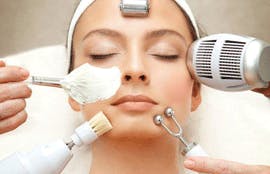 Laser facial aftercare
Laser facial aftercare
Laser peel facials can differ greatly between medical spas and each treatment has its own unique aftercare requirements - always follow the advice given to you by your dermatologist/aesthetician.
PLEASE NOTE: Chemical peels and laser facials are considered cosmetic procedures and are therefore administered by cosmetic surgeons and qualified staff employed at medical spas only. These treatments are not offered at the traditional spa venues represented by SpaSeekers - the information above is for reference purposes only.
Non-chemical and non-laser peel facials
Some people are unable, or reluctant, to undergo chemical application or laser therapy, and so an increasing number of traditional spas now offer ‘peel facials’, which involve the use of neither. Instead, these treatments feature specially-created, exfoliants and/or peel-off masks (comprising ingredients more effective and luxurious than those found in home products) to encourage dead skin cell removal.
These special products are teamed with unique face massage techniques designed to stimulate the skin deep down in the dermis. These techniques increase collagen production in a similar way to chemical and laser-based peel treatments, but without the risk of skin irritation caused by damage to the epidermis.
While improvement can often be seen after a single non-chemical or non-laser peel facial, repeat sessions are often recommended for those seeking the greatest possible transformation.
Be sure to visit our spa vouchers page, where facials can be purchased as part of a selection of treatment packages - an ideal gift for a loved one, friend or even yourself.
